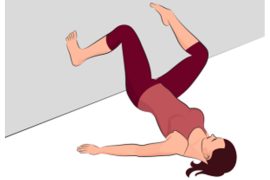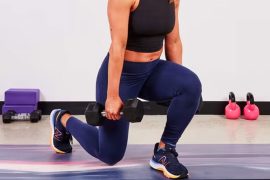When embarking on a workout journey, individuals often set specific fitness goals, whether it’s weight loss or building endurance. However, amidst the focus on exercise intensity and the number of sets, one critical aspect that often goes overlooked is the importance of rest intervals between sets. Regardless of your fitness goals or experience level, understanding the appropriate duration for rest between sets can significantly impact the achievement of desired results. Tailoring these rest periods to your specific fitness objectives can be a game-changer, optimizing your workout routine for better outcomes. To make the most of your workouts, it’s essential to recognize and implement the right rest intervals, and this article delves into the significance of this often underestimated element of effective training.
Rest between sets:
The idea of pushing oneself to the limit and sweating it out can be enticing, neglecting sufficient rest between sets can impede progress and heighten the risk of injury. Resting between sets serves a more profound purpose than merely catching one’s breath; it constitutes a necessary pause that facilitates the replenishment of energy stores, the elimination of metabolic byproducts, and preps the body for the subsequent round of exertion. This recovery period plays a pivotal role in optimizing performance and maximizing the gains obtained from the workout.
Incorporating tailored rest intervals into the exercise regimen is emphasized as a means of fine-tuning the approach based on specific fitness goals. Whether one’s objective is weight loss or building endurance, recognizing the appropriate rest duration can substantially impact the desired outcomes. By understanding the significance of these intervals and their contribution to performance enhancement, individuals can make more informed decisions about their workout strategies and work more effectively toward achieving their fitness objectives.
Rest time for beginners:
For beginners in the realm of exercise, adopting a gradual approach is essential. According to fitness expert Varun Rattan, beginners should typically incorporate a rest period of 30 to 60 seconds between sets. This timeframe strikes a balance, providing adequate recovery without disrupting the workout’s momentum. Too little rest may result in premature fatigue and compromised form, while excessive rest can reduce the intensity of the workout. This recommended rest duration offers beginners the opportunity to build their fitness foundation effectively and avoid potential pitfalls associated with overexertion or inadequate recovery.
Resting between exercise for weight loss:
Rest intervals between exercises can be strategically employed to enhance the effectiveness of workouts aimed at weight loss. Shorter rest periods, typically ranging from 30 to 60 seconds, help maintain a high-intensity workout. This approach keeps the heart rate elevated and the metabolism active, facilitating the calorie-burning process and promoting fat loss. By minimizing rest durations, individuals can maximize the impact of their exercise routine, making it a valuable component in their weight loss journey.
Short Rest Periods:
Endurance training is centered around enhancing stamina and the capacity to endure extended physical activities. To support the goals of endurance building, rest intervals should generally be kept short, typically within the range of 30 to 60 seconds. This approach ensures a continuous challenge to the cardiovascular system, encouraging adaptations that foster improved endurance. By maintaining shorter rest periods, individuals can better promote their stamina and endurance, making it an essential component of their training regimen.
Rest Periods:
For individuals aiming to achieve hypertrophy or muscle growth, a recommended rest period of one to two minutes between sets is crucial. This duration allows for effective muscle recovery and ensures that subsequent sets can be executed with maximum effort, ultimately leading to muscle building. The specific rest period may vary depending on the exercise type and individual preferences, but this range generally provides an appropriate balance between recovery and workload, facilitating the desired muscle hypertrophy.
The excellent guidelines to remember when resting between sets during a workout. Let’s break them down:
- Monitor Fatigue: Pay attention to your body’s signals. Adjust your rest periods based on how fatigued you feel. If you’re still breathless or can’t maintain proper form, take slightly longer rests. This is essential for preventing injury and ensuring your workout is effective.
- Listen to Your Body: Your body communicates with you through sensations of fatigue or pain. If you’re experiencing excessive fatigue or discomfort in any part of your body, don’t push through it. It’s better to take a longer rest or modify your workout to prevent injuries.
- Experiment and Adapt: Everyone is different, and there’s no one-size-fits-all approach to rest periods. Experiment with different rest durations and find out what works best for you and your specific fitness goals. Your optimal rest time may vary based on the exercises, your fitness level, and your training objectives.
In summary, these points emphasize the importance of listening to your body, adjusting your rest periods accordingly, and experimenting to find the ideal rest duration that supports your fitness goals while ensuring a productive and safe workout.
Disclaimer:
The information contained in this article is for educational and informational purposes only and is not intended as a health advice. We would ask you to consult a qualified professional or medical expert to gain additional knowledge before you choose to consume any product or perform any exercise.








